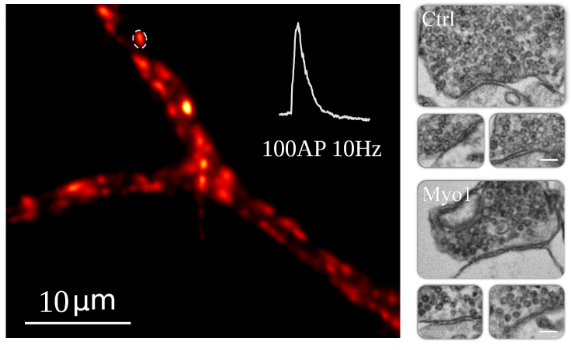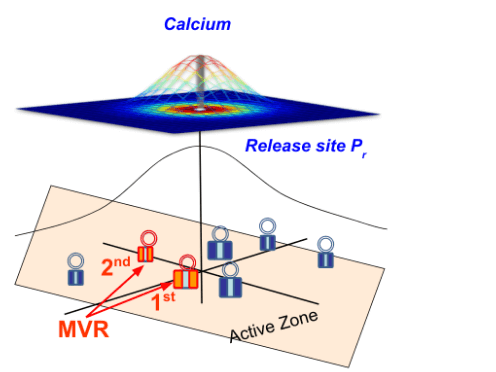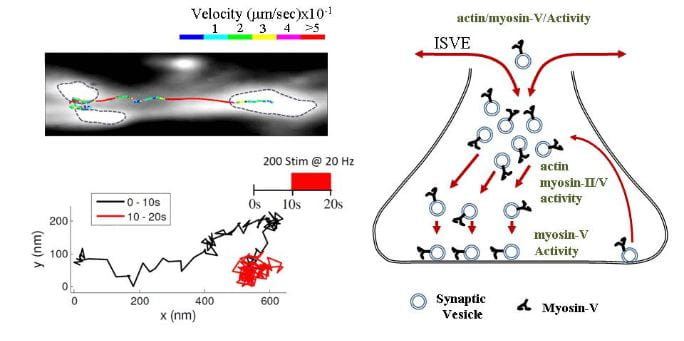Overview
Using our advanced imaging technology, we have identified critical details of synaptic vesicle dynamics during their recycling process. For example, we successfully tracked the movements of individual synaptic vesicles and discovered major roles for actin cytoskeleton and myosin motors in vesicle translocation during recycling and subsequent mobilization for release. We also observed that vesicles involved in activity-evoked and spontaneous neurotransmission differ in their dynamic behavior, particularly in their ability to engage in directed actin-mediated motion. Additionally, we revealed unexpected roles for actin and myosin V in mediating vesicle transport between synaptic boutons during inter-synaptic vesicle exchange.

Using our advanced imaging approach we are also able to detect individual vesicle fusion events with a ~20nm precision within a single hippocampal synapse. In this way we identified a set of specialized release sites at which vesicle fusion occurs repeatedly in response to stimulation. We then showed, for the first time, that the spatial and temporal properties of release sites are dynamically regulated by neural activity. Our results further reveal a previously unknown level of structural and functional organization among vesicle release sites, characterized by a center-to-periphery gradient of release site properties within individual synapses.

Progress
The major questions going forward include: how are different forms of neurotransmitter release (mono- and multi-vesicular release, asynchronous release, and spontaneous release) are organized and regulated at individual central synapses. Do all forms of release share the same release sites, or are there specialized release sites that support specific forms of release? How does neural activity or cytoskeletal structure regulate the spatiotemporal properties of release? How is vesicle refilling regulated at the release sites? How neural activity impacts the spatiotemporal properties and prevalence of specific types of release, and what role this modulation plays in synaptic plasticity? Finally, how these mechanisms differ between excitatory and inhibitory synapses?
